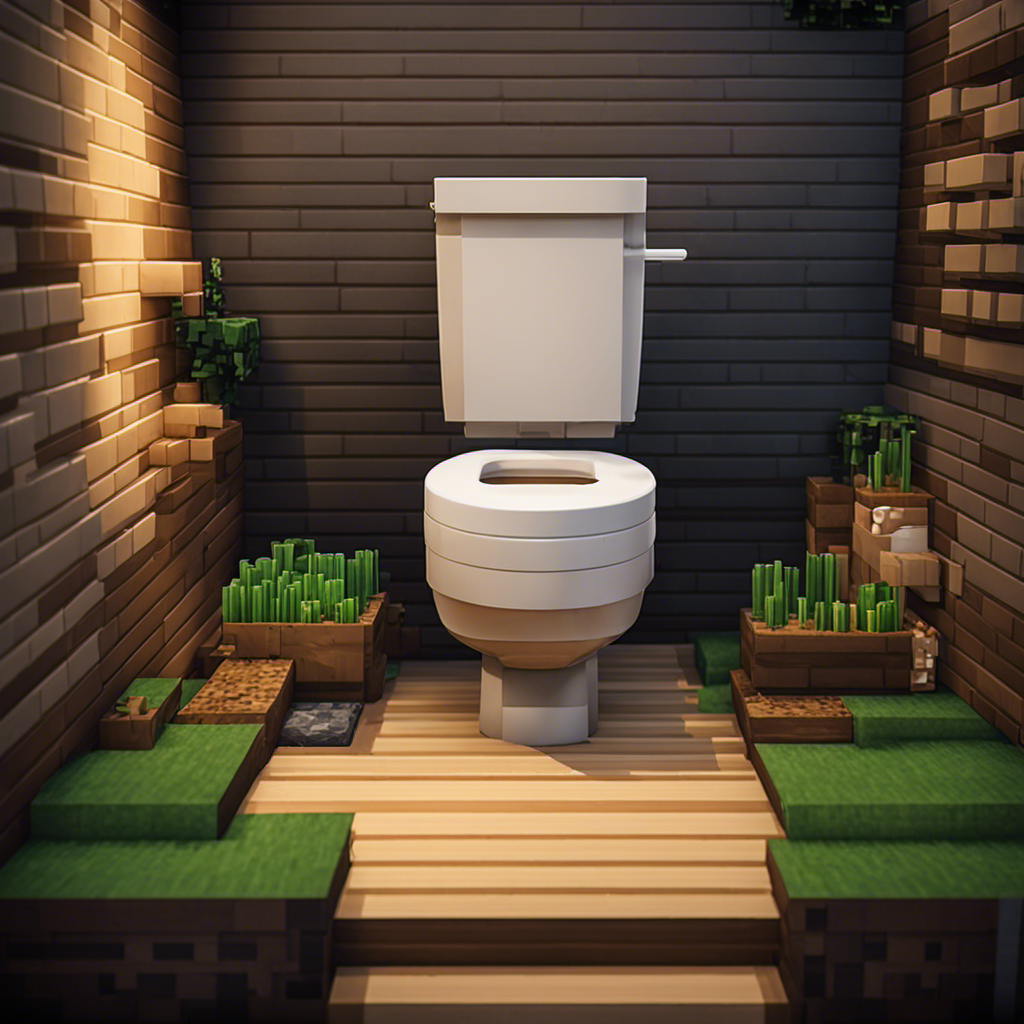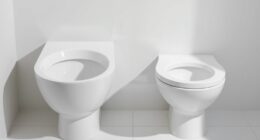We’ve all experienced it – finding ourselves in the restroom, clutching a spent tampon, pondering our next move.
Can we just flush it down the drain and be done with it?
Well, let’s delve into the world of tampon disposal and find out.
In this article, we’ll explore the risks and consequences of flushing tampons, as well as debunk common misconceptions.
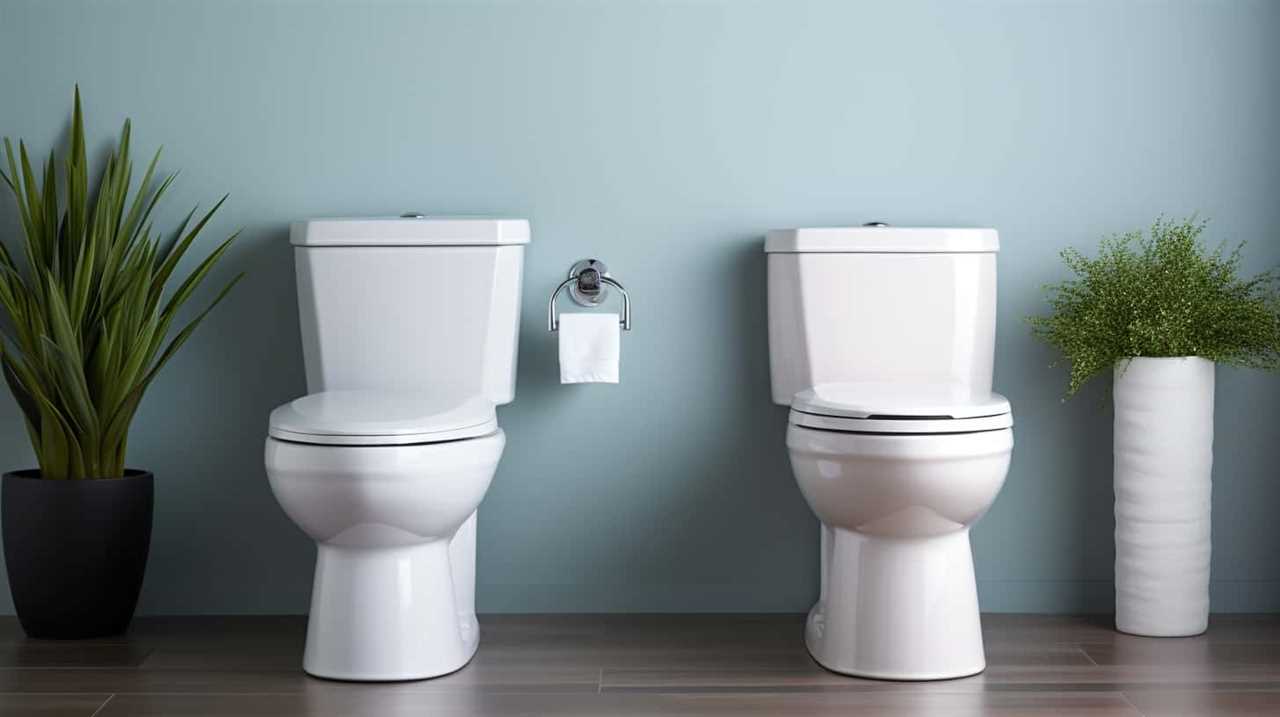
So, if you’re seeking mastery over the proper tampon disposal techniques, you’ve come to the right place.
Key Takeaways
- Flushing tampons can cause clogs in pipes, leading to costly plumbing repairs.
- Tampons contain synthetic fibers and chemicals that can leach into the water supply, harming aquatic life.
- Proper tampon disposal in designated waste bins minimizes plumbing risks and prevents water pollution.
- Flushing tampons poses a risk to both the sewage system and residential plumbing.
The Risks of Flushing Tampons
Flushing tampons down the drain poses several risks to our plumbing system and the environment.
When tampons are flushed, they can cause clogs in the pipes. The absorbent material of tampons can expand when wet, making it more difficult for them to pass through the pipes. This can lead to blockages and backups, causing costly plumbing repairs.
Additionally, tampons can accumulate in the sewer system, leading to larger issues in the overall infrastructure.
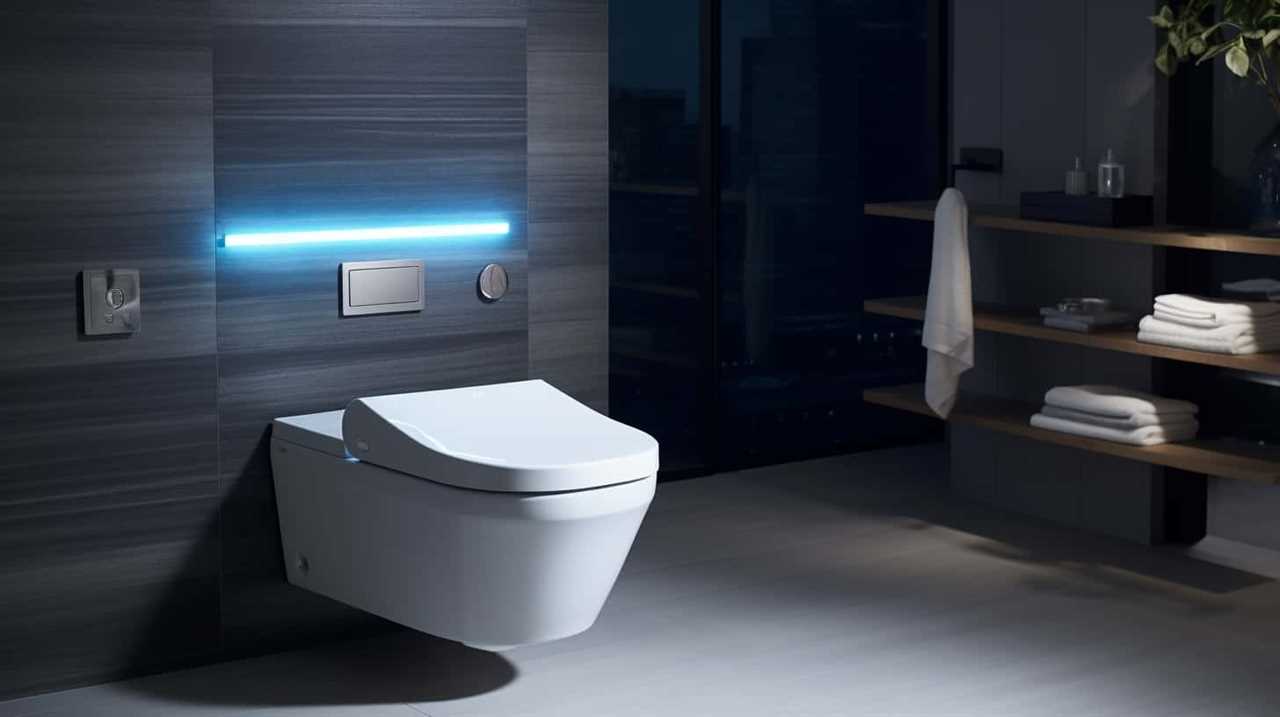
Moreover, tampons can contribute to water pollution. They contain synthetic fibers and chemicals that can leach into the water supply, harming aquatic life and ecosystems.
It’s important to dispose of tampons properly in designated waste bins to minimize plumbing risks and prevent water pollution.
In the next section, we’ll discuss the specific plumbing problems associated with flushing tampons.
Plumbing Problems Associated With Flushing Tampons
When it comes to flushing tampons down the drain, there are several plumbing problems that can arise.
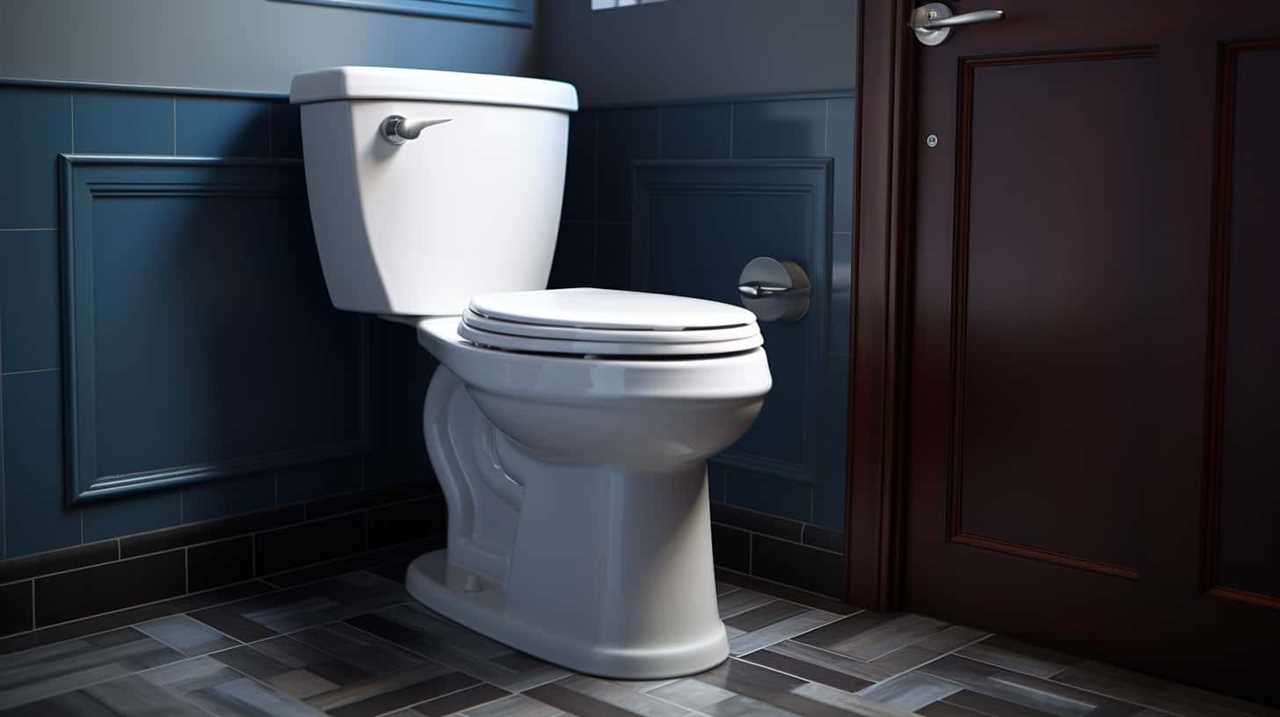
One common issue is clogged pipes and drains, which can occur when tampons get stuck and accumulate over time.
Additionally, flushing tampons can lead to sewer system blockages, causing backups and overflows.
It’s important to be aware of these potential problems to avoid costly repairs and inconvenience.
Clogged Pipes and Drains
We often encounter clogged pipes and drains as a result of flushing tampons down the drain. Flushing tampons down the toilet may seem convenient, but it can lead to serious plumbing issues.

Tampons are designed to absorb and expand, which makes them prone to getting stuck in pipes and causing blockages. When tampons accumulate in the pipes, they can create a barrier that prevents water and waste from flowing freely. This can lead to clogged drains and backups in the plumbing system.
It’s important to remember that toilets and drains are designed for specific types of waste, and tampons shouldn’t be flushed down the drain.
In the next section, we’ll discuss the consequences of these clogs on the sewer system.
Sewer System Blockages
To understand the consequences of flushing tampons down the drain, let’s examine how sewer system blockages can occur. Sewer system blockages are a common plumbing problem associated with improper waste management. When tampons are flushed, they can get caught in the pipes and accumulate over time, leading to clogs in the sewer system. These blockages can cause sewage backups, which can be messy, costly, and time-consuming to fix. Proper sewer system maintenance is crucial to prevent these issues. Regular inspections, cleaning, and maintenance of sewer lines can help identify and prevent blockages before they become major problems. Additionally, practicing proper waste management by disposing of tampons in the trash instead of flushing them can contribute to the overall health and functionality of the sewer system.

| Sewer System Blockages | Consequences |
|---|---|
| Accumulation of tampons in pipes | Clogs in the sewer system |
| Sewage backups | Messy, costly, and time-consuming repairs |
| Lack of proper maintenance | Major plumbing problems |
| Flushing tampons | Improper waste management |
Environmental Impact of Flushing Tampons
When it comes to the environmental impact of flushing tampons, there are several crucial points to consider.
Firstly, flushing tampons can contribute to water pollution as they can contain harmful chemicals and bacteria that can contaminate water sources.
Secondly, the act of flushing tampons can lead to damage in sewage systems, causing blockages and backups that can be costly and time-consuming to fix.
Lastly, the disposal of tampons in the toilet can harm marine life, as they can end up in bodies of water and be mistaken for food by animals, leading to ingestion and potential harm.
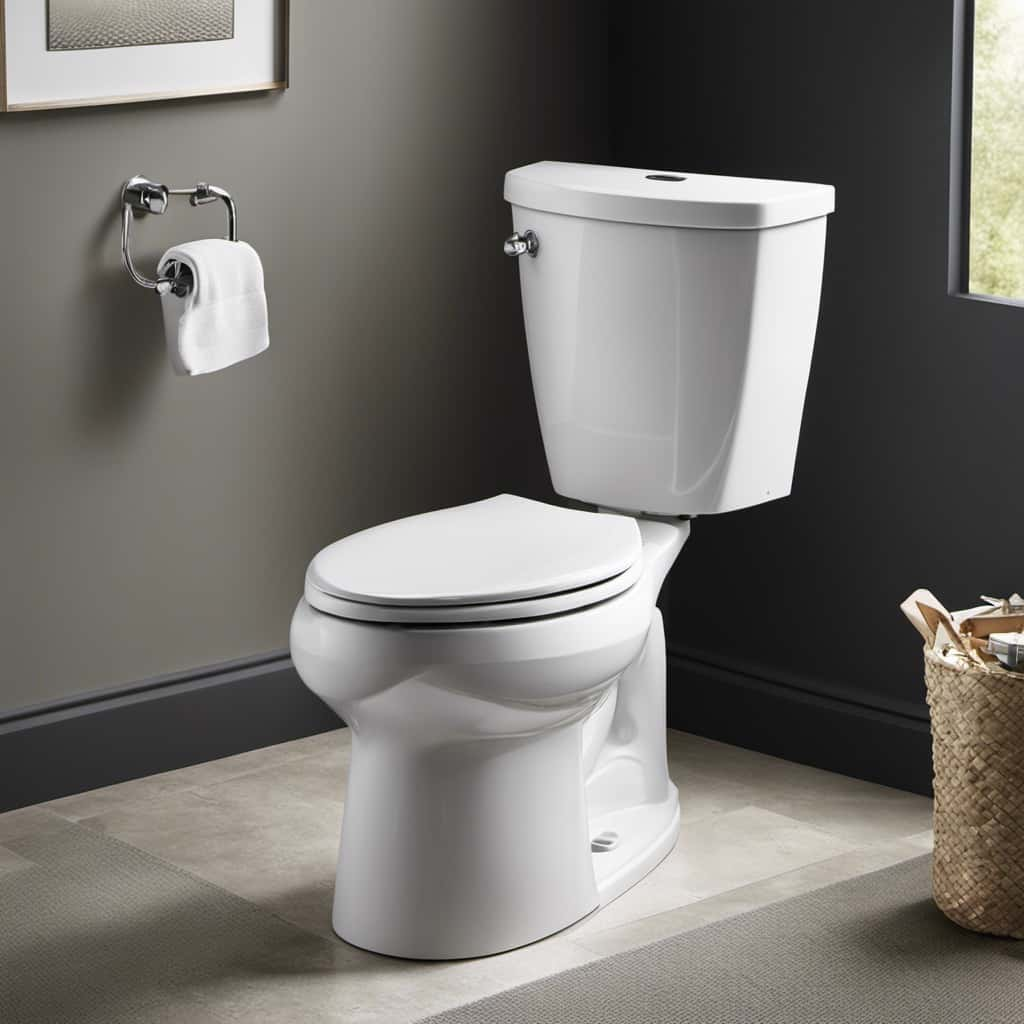
Water Pollution Risks
The disposal of tampons down the drain poses significant water pollution risks, endangering aquatic ecosystems and compromising water quality. When tampons are flushed, they can contribute to water contamination, as they contain materials that aren’t easily broken down in the environment. The fibers in tampons can clog waterways and disrupt the natural flow, leading to stagnant water and the buildup of harmful bacteria.
Additionally, the chemicals used in tampons, such as dyes and fragrances, can leach into the water, further compromising its quality. This water contamination can have serious health risks for both humans and aquatic life, as it can lead to the spread of diseases and the disruption of delicate ecosystems. Therefore, it’s crucial to properly dispose of tampons in designated waste bins to prevent these water pollution risks.
In the subsequent section, we’ll discuss the potential damage that flushing tampons down the drain can cause to the sewage system.
Sewage System Damage
In the article ‘Can You Flush Tampons Down the Drain’, we will now delve into the environmental impact of flushing tampons, specifically focusing on the damage they can cause to the sewage system. Sewage systems are designed to handle waste, but they are not equipped to handle items like tampons. When tampons are flushed down the toilet, they can cause blockages in the pipes, leading to sewage backups and costly repairs. To illustrate the potential damage, consider the following table:

| Sewage System Damage | Consequences |
|---|---|
| Blockages | Sewage backups, residential plumbing issues |
| Pipe damage | Leaks, burst pipes, sewage system maintenance |
Flushing tampons not only poses a risk to the sewage system, but also to residential plumbing. To avoid these issues, it is crucial to dispose of tampons properly in the trash. In the following section, we will discuss the harm flushing tampons can cause to marine life.
Harm to Marine Life
To continue our discussion on the environmental impact of flushing tampons, let’s explore how it harms marine life. Flushing tampons down the drain can introduce harmful chemicals into the marine ecosystem, causing significant ecosystem disruption.
Here are two key points to consider:
- Chemical Contamination:
- Tampons are made of synthetic materials that contain harmful chemicals such as dioxins and phthalates.
- When tampons are flushed, these chemicals can be released into the water, posing a threat to marine organisms.
- Ecosystem Disruption:
- The introduction of harmful chemicals can disrupt the delicate balance of the marine ecosystem, affecting the health and survival of marine life.
- Organisms such as fish, corals, and other marine species can suffer from reproductive issues, hormonal imbalances, and even death due to exposure to these chemicals.
It is essential to dispose of tampons properly in designated bins to protect our marine environment from the harmful consequences of flushing.

What Happens When You Flush a Tampon
One major consequence of flushing a tampon down the drain is that it can cause blockages in the plumbing system. This happens because tampons aren’t designed to break down in water like toilet paper does. Instead, they can get caught in pipes, leading to clogs and backups.
Flushing tampons also poses risks to the sewage system. When tampons accumulate in the sewage system, they can cause damage to pumps and other equipment, resulting in costly repairs. Furthermore, tampons that make their way to wastewater treatment plants can interfere with the treatment process and contribute to the release of harmful substances into the environment.
Understanding the consequences of flushing tampons is crucial in dispelling misconceptions and promoting proper disposal methods.
Common Misconceptions About Flushing Tampons
There are several common misconceptions about flushing tampons down the drain that need to be addressed.
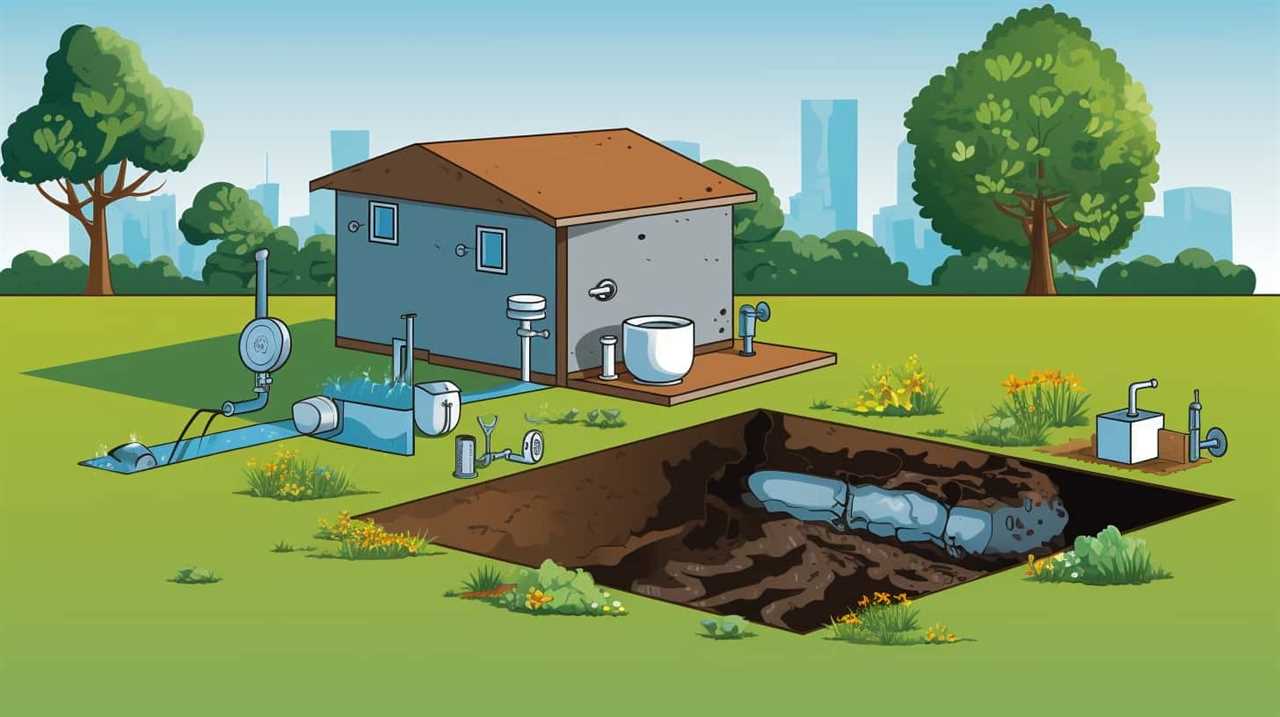
First, it’s important to understand the safe disposal methods for tampons, as flushing them can lead to serious plumbing issues.
Second, flushing tampons also has significant environmental impact risks, as they can clog sewage systems and contribute to pollution in water bodies.
It’s crucial to dispel these misconceptions and promote responsible tampon disposal practices to protect both our plumbing systems and the environment.
Safe Disposal Methods
We recommend properly disposing of tampons in the trash to avoid potential plumbing issues. Flushing tampons down the drain can lead to clogged pipes and costly repairs.

Here are some safe disposal methods to consider:
- Trash disposal: Wrap the used tampon in toilet paper or a small bag before placing it in the trash bin. This is the most common and convenient method for tampon disposal.
- Composting tampons: Some tampons are made from biodegradable materials, allowing them to be composted. However, it’s important to check the packaging to ensure they’re suitable for composting. If they are, you can dispose of them in a compost bin or facility.
When it comes to tampon disposal in public restrooms, it’s essential to follow the guidelines provided. Most public restrooms have designated bins for feminine hygiene products. Always use these bins and never flush tampons down the toilet, as it can cause plumbing problems for others.
Proper disposal not only maintains plumbing systems but also helps protect the environment.
Environmental Impact Risks
Flushing tampons down the drain can have significant environmental impact risks that are often misunderstood.
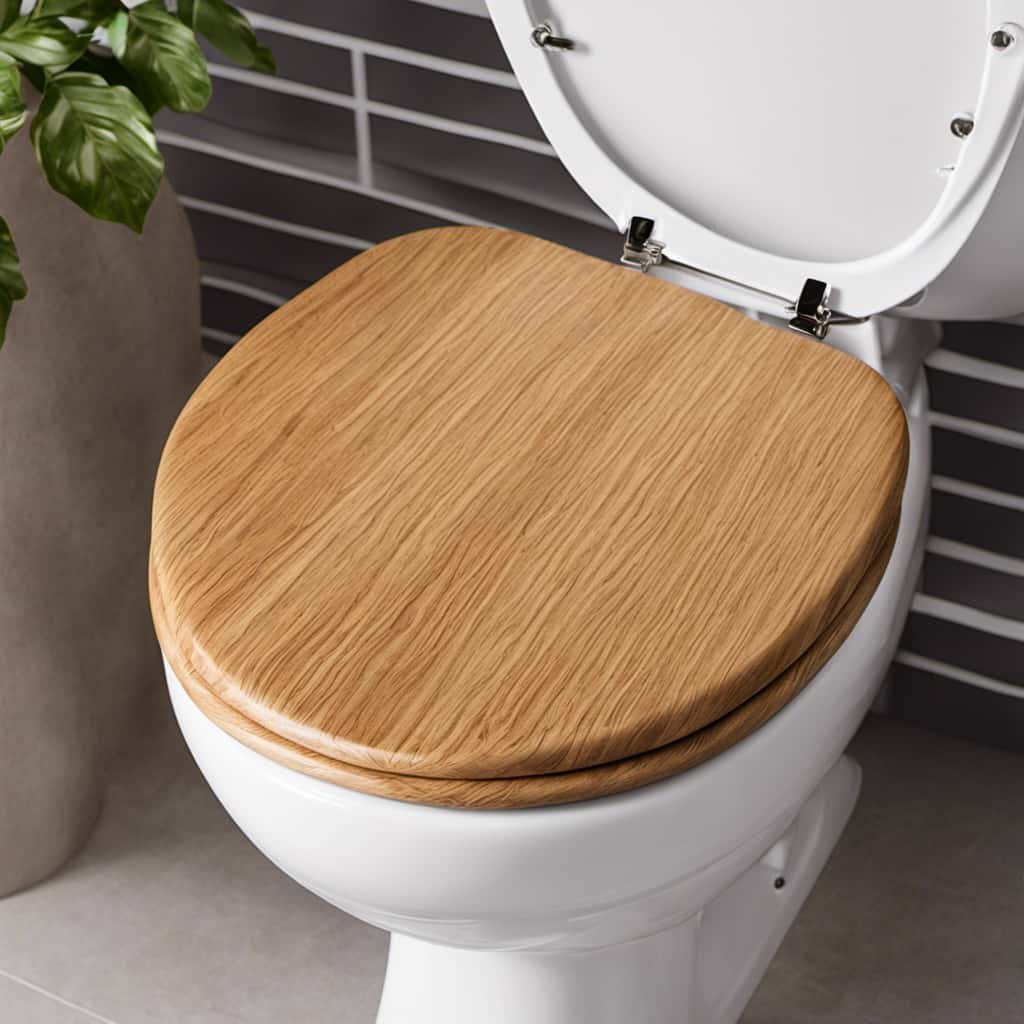
One common misconception is that tampons are made from biodegradable materials and will break down easily in water. However, most tampons are made of synthetic fibers that don’t readily decompose.
When flushed, these tampons can clog pipes and sewage systems, leading to costly repairs and maintenance. Moreover, tampons can also cause water contamination by releasing harmful chemicals into the water supply. This poses a serious threat to both human health and environmental sustainability.
To mitigate these risks, it’s important to educate individuals about proper disposal methods and the importance of using alternative options.
Alternatives to Flushing Tampons
Instead of flushing tampons down the drain, we can opt for alternative disposal methods. Not only is flushing tampons harmful to the environment and can cause plumbing issues, but there are also more sustainable options available. Here are two alternatives to consider:
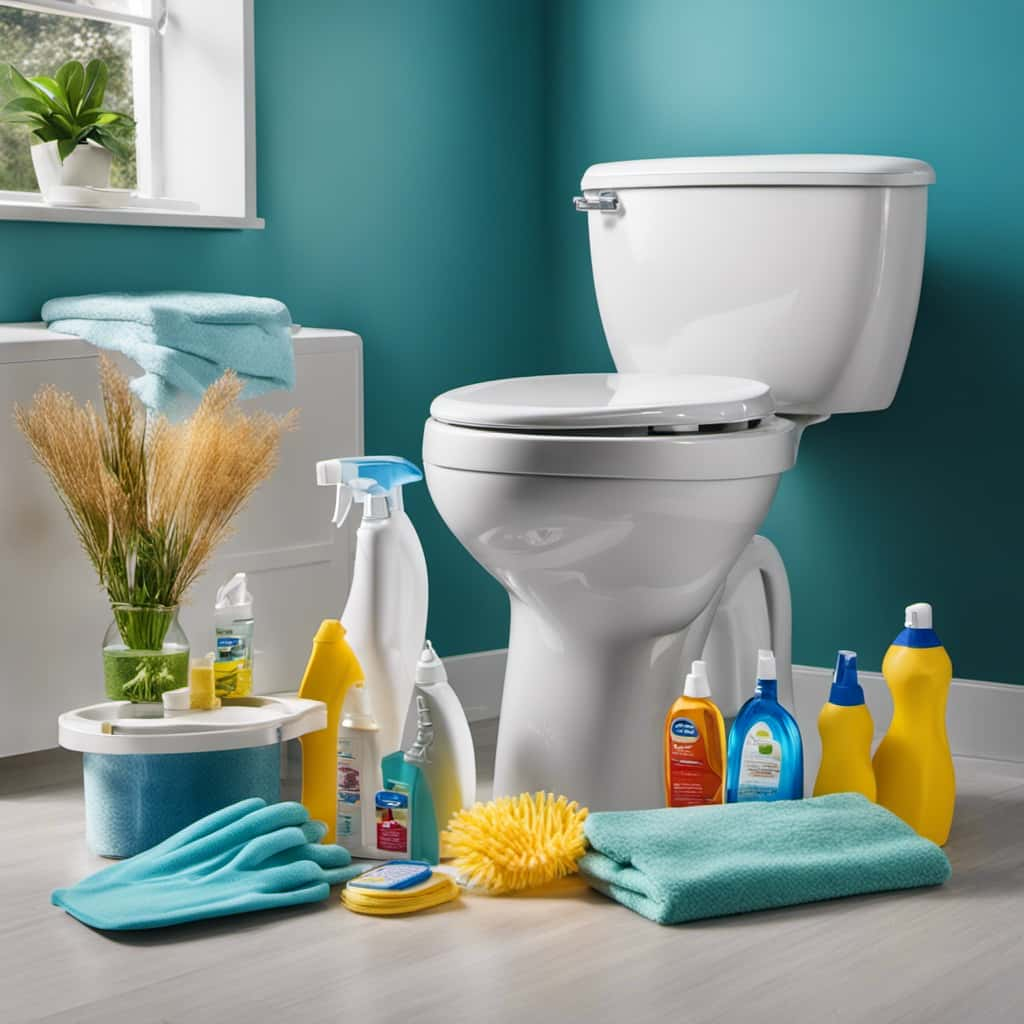
- Compostable tampon options:
- Look for tampons that are made from biodegradable materials, such as organic cotton or bamboo.
- These tampons can be safely composted, reducing waste and minimizing environmental impact.
- Reusable menstrual products:
- Consider using reusable options like menstrual cups, cloth pads, or period underwear.
- These products are designed to be washed and reused, reducing waste and saving money in the long run.
How to Properly Dispose of Tampons
To properly dispose of tampons, it is important to follow the recommended guidelines for managing menstrual waste. While flushing tampons down the toilet may seem convenient, it can lead to serious plumbing issues and environmental problems. Instead, consider the following methods for proper tampon disposal:
| Method | Description | Emotional Response |
|---|---|---|
| Wrapping and Bin | Wrap the used tampon in toilet paper or bag | Disgust |
| and dispose of it in a designated bin. | ||
| Composting | Use compostable tampons and dispose of them | Environmental |
| in a compost bin. | Consciousness | |
| Tampon Disposal Bags | Utilize tampon disposal bags that can be | Convenience |
| sealed and thrown away in public restrooms. |
Proper tampon disposal is crucial to maintain hygiene and protect our environment. By following the suggested methods, we can prevent clogged pipes, reduce waste, and promote a cleaner, more sustainable future. Now, let’s explore the importance of proper tampon disposal.
The Importance of Proper Tampon Disposal
After properly disposing of tampons by wrapping them in toilet paper or using tampon disposal bags, we can now discuss the importance of this practice.
Proper tampon disposal is crucial for several reasons:

- Environmental impact:
- Tampons that are improperly disposed of can end up in water bodies, causing pollution and harm to marine life.
- The plastic applicators of tampons can take hundreds of years to decompose, contributing to the global plastic waste problem.
- Hygiene and sanitation:
- Proper tampon disposal helps maintain cleanliness in bathrooms and prevents the spread of bacteria and odors.
- It reduces the risk of plumbing clogs and costly repairs caused by flushing tampons down the toilet.
By following correct tampon disposal methods, we can protect the environment, promote good hygiene, and prevent plumbing issues.
It’s essential to educate others about the importance of proper tampon disposal to ensure a cleaner and healthier environment for all.
Can Tampons Be Composted
Although tampons are often disposed of in the trash or flushed down the toilet, it’s important to consider whether tampons can be composted. Composting is a natural process that breaks down organic materials, such as food scraps and yard waste, into a nutrient-rich soil amendment.
While tampons are made primarily of organic cotton, they also contain other materials like plastic and synthetic fibers, which don’t break down easily in the composting process. Additionally, tampons may contain bacteria and bodily fluids that can be harmful if not properly treated.

Therefore, it isn’t recommended to compost tampons. Instead, they should be disposed of in the trash or consider using alternative menstrual products that are compostable or reusable.
Transitioning to the next section, let’s now explore tampon disposal in public restrooms.
Tampon Disposal in Public Restrooms
When using public restrooms, we recommend properly disposing of tampons in designated containers provided. Tampon disposal etiquette is crucial for maintaining public restroom hygiene. Here are some important points to remember:
- Don’t flush tampons down the toilet as they can cause clogs and damage the plumbing system.
- Always wrap used tampons in toilet paper or the wrapper they came in to prevent leakage and odors.
- Proper wrapping ensures discretion and cleanliness.
- It’s considerate to other restroom users and the cleaning staff.
- Look for the designated disposal bins in the restroom stalls and make sure to use them.
- These bins are specially designed to handle tampons and maintain proper hygiene.
By following these guidelines, we contribute to a cleaner and more comfortable public restroom environment.

Now, let’s move on to the next section where we’ll discuss tips for discreet tampon disposal.
Tips for Discreet Tampon Disposal
To ensure discreet tampon disposal, we recommend using a small plastic bag for easy and odor-free transportation. This method is a part of proper tampon disposal etiquette and helps maintain cleanliness in public restrooms.
When disposing of a used tampon, simply wrap it in a small plastic bag and tie it securely. This prevents any unpleasant odors from escaping and keeps the contents discreetly hidden. The small plastic bag can then be disposed of in the regular trash bin.
Another discreet tampon disposal method is to use special disposal bags designed specifically for feminine hygiene products. These bags are discreetly scented and provide an additional layer of odor control.
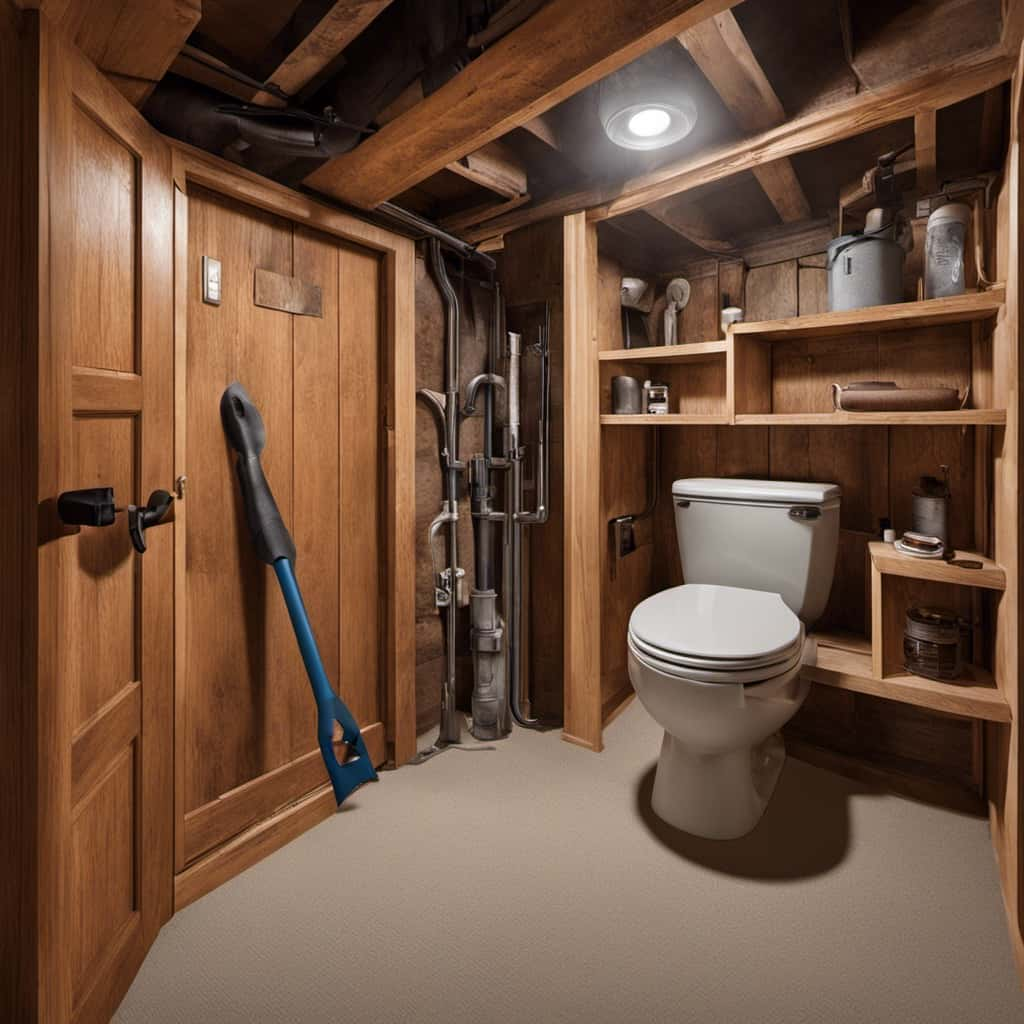
Final Thoughts on Flushing Tampons Down the Drain
In our final thoughts on the topic, we want to emphasize that it’s important not to flush tampons down the drain. While public opinion and cultural practices may vary, it’s crucial to consider the potential consequences of this action.
Here are two key reasons why flushing tampons down the drain should be avoided:
- Plumbing Issues:
- Flushing tampons can lead to clogged pipes and sewer backups.
- The absorbent nature of tampons causes them to expand, posing a risk for blockages.
- Environmental Impact:
- Tampons that reach water treatment plants may not be effectively filtered out.
- These discarded tampons can end up in water bodies, causing harm to aquatic life.
Considering the negative effects on plumbing systems and the environment, it’s advisable to dispose of tampons in a more appropriate manner, such as wrapping them in toilet paper and discarding them in the trash.
Conclusion
In conclusion, flushing tampons down the drain poses significant risks to both plumbing systems and the environment. Symbolically, this act represents the need for responsible waste management and the importance of considering the consequences of our actions.

By properly disposing of tampons in designated bins or composting them, we can help prevent clogs, sewage backups, and pollution.
Let’s make a conscious effort to protect our plumbing and preserve the health of our planet.






